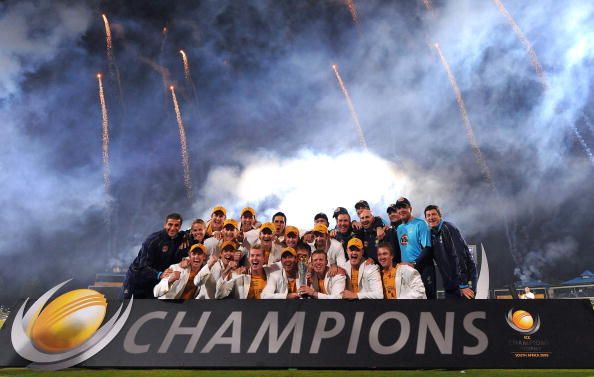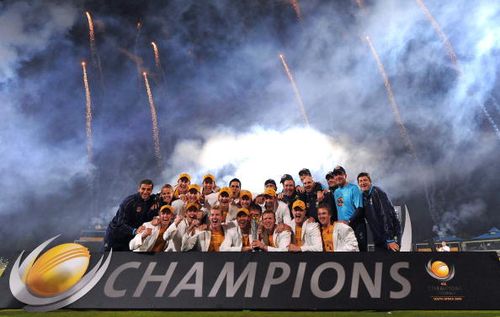
Champions Trophy: A tale of mismanagement and lost opportunities

Australia are the defending champions in this last edition of ICC Champions Trophy
In the late nineties, it was Jagmohan Dalmiya (yes, that man is everywhere now), the then ICC president who brought up the idea of Champions Trophy. The tournament’s main purpose was to raise funds for the game along with taking it to uncharted territories. Then known as the ICC Knockout Cup, it made its first appearance in Dhaka, Bangladesh in 1998.
Being a knockout event, the masses loved the element of uncertainty it had. It also ensured that the teams were on their toes all the time as even a slight slip up would mean ouster from the competition. Dubbed as the ‘mini World Cup’, there was enormous amount of prestige attached to it and it ranked second only to the World Cup in every team’s wishlist.
In a bid to increase the popularity of the game, the ICC decided to include the associate nations in the competition. As a result, the format was changed from knockout to round robin matches in the initial stages in the 2002 edition. Though the move produced a slew of lop sided contests at the beginning of the event, where teams like USA and Holland were massacred, it was still a novel idea.
The idea of a crisp tournament among the top Test teams was compromised but it at least had a vision. Instead of playing to qualify just for the World Cups, the associate nations had something else to fight for. It certainly made more sense than the meaningless tri-series we had in the Middle East in the mid-nineties.
Things got worse in subsequent editions. With the international schedule getting tighter, the biennial event struggled to get a decent window to fit in. The tournament was now being seen as a liability and often got scheduled at unsuitable times, adversely affecting the quality of cricket.
While in its fourth edition in 2004 it was held in September in England, way after the English summer, in 2006 it was staged in the month of October in India, right at the tail of monsoon and too early in the Indian season. On both the occasions, the conditions weren’t ideal and it resulted in some substandard cricket. In fact the BCCI was trying to coax the cricketing community to make its fifth appearance its final edition and scrap the competition in 2006 itself as it was proving to be a ‘financial burden on the host nation’.
As voices to cancel the Champions Trophy grew louder, the event did its best to remind everyone of its utility. At a time when the 50-over version of the game was facing a credibility crisis following the intrusion of Twenty20 cricket, it was this tournament, in its penultimate appearance in South Africa in 2009, that resurrected the traditional one-day format. With the number of participating teams trimmed to eight and an innovative powerplay rule introduced, it was on the back of this competition the ICC managed to woo the crowd back.
Even though there was a purpose to solve, the ICC had made up its mind. With the proposed Test Championship due to make its debut soon, there was simply no space for the ‘poor man’s World Cup’. Moreover, Twenty20 cricket now seemed a more viable option to make revenues and take the game to untapped markets.
In its final edition too, the Champions trophy will be doing more good than harm to the game, trying to bring the on field action to the fore amidst the fixing saga. But once the final is done with on 23rd of June, it’s highly unlikely that there would be any mourning.
The fans, though, will look back at the tournament with nostalgia at the various glorious moments it has produced over the years – Kallis’s coming of age in Dhaka, a vintage Tendulkar show against Australia, emergence of Yuvraj Singh, Chris Cairns’s blazing century at Nairobi, a rear guard effort from the Windies tail in near darkness at The Oval and more recently, Watson’s belligerence in South Africa.